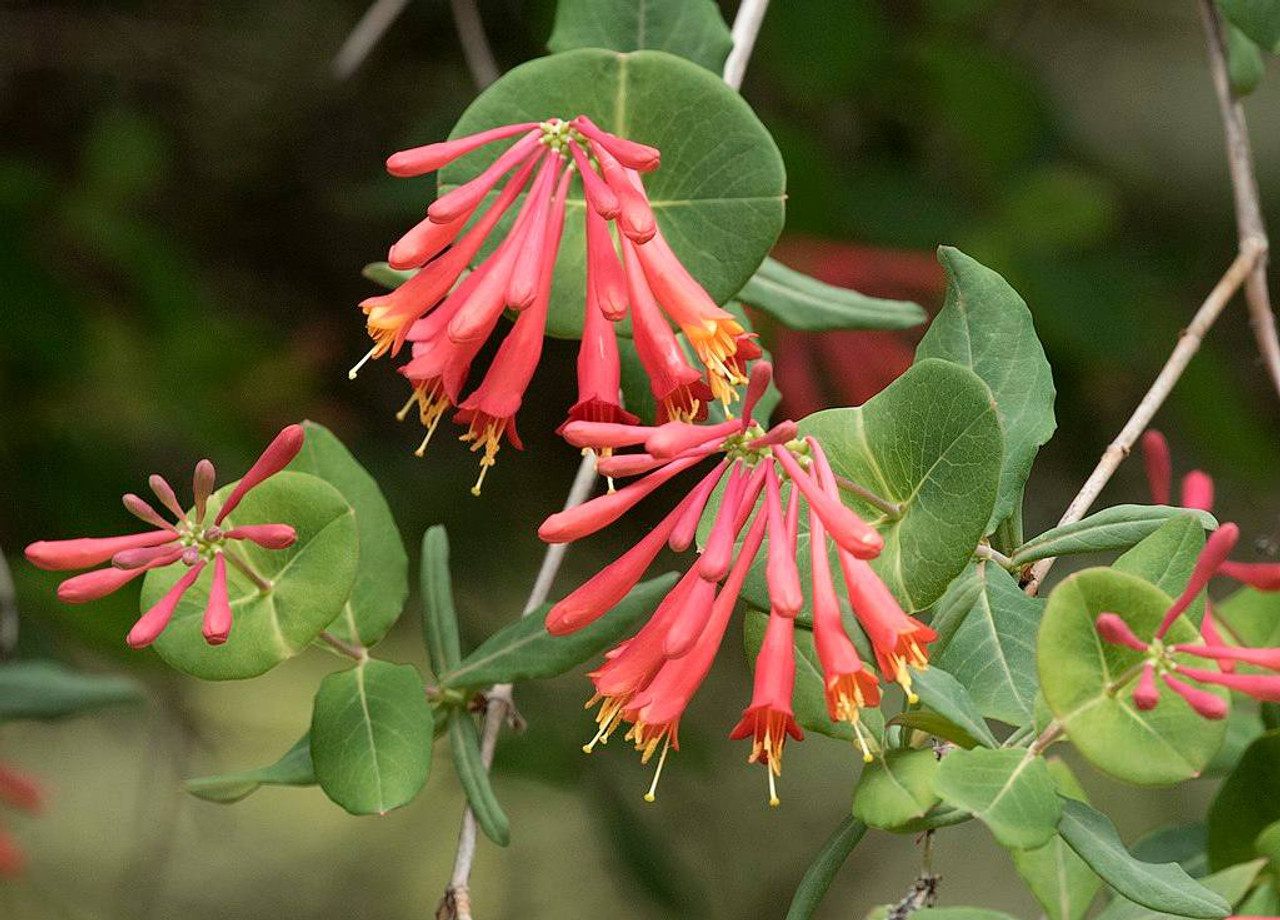Lonicera sempervirens (Coral Honeysuckle) is a deciduous red-orange tubular flower with orange insides that bloom all summer and is great for hummingbirds and butterflies; it does well on fences, trellises, etc.
Trumpet honeysuckle is a vigorous twining vine in the Caprifoliaceae (honeysuckle) family native to the southeastern United States and evergreen in the warm winter climates of the deep South. The genus Lonicera is named for Adam Lonicerus, a German botanist from the 1500s.
Trumpet honeysuckle grows in medium moisture, well-drained, neutral to acidic soils in full sun. It will grow in shade, but the best flowering is in full sun. It likes organically rich soils. It flowers on new growth, so avoid pruning until after flowering. High nitrogen fertilizer will produce foliage at the expense of flowers—Propagate by layering, stem cutting, or seed.
This twining vine can reach 10 to 20 feet tall and 3 to 6 feet wide. It needs a support structure and thus is an excellent choice for a trellis, arbor, or fence. However, it can also be allowed to sprawl as a ground cover. Native honeysuckle is not invasive, flowers in mid-spring, and is often non-fragrant. It is an excellent addition to a butterfly, native, or pollinator garden. Its salt tolerance makes it especially welcome in coastal gardens.
